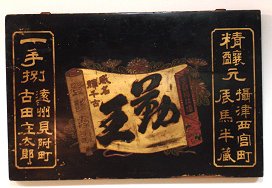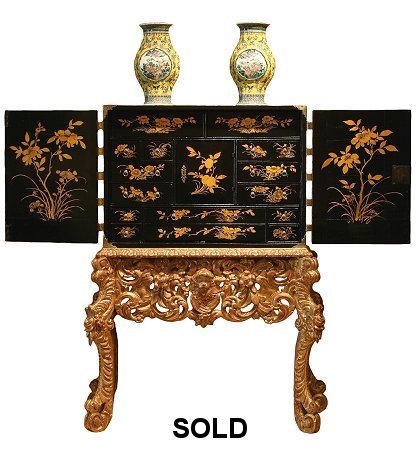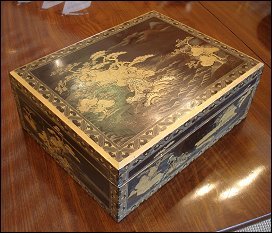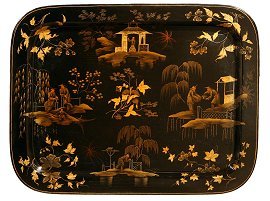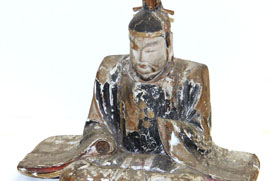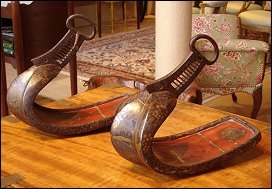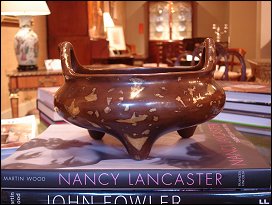Japanese trade sign for Chokuo sake, with black painted wood planks joined by cleats to the reverse, with the front side with a central scroll portion.
Possibly late Meiji period, early 20th century
Contact us about this item
Possibly late Meiji period, early 20th century
A Japanese lacquer and gilt tray, decorated with fans both open and closed. Signed ‘Keizan’. Mounted on a contemporary lucite stand.
Showa period, circa 1960
William and Mary period japanned cabinet on giltwood stand. The exterior of the cabinet with fanciful chinoiserie decoration, with English-made brass fittings in the Oriental manner. The interior drawers with gilt floral decoration, with hidden drawers within.
Circa 1700
Late Meiji period bunko-bako or document box, with the sides and panels decorated with landscape panels executed in hiramakie, with a second interior lacquer tray, in nishiji lacquer.
Circa 1900
Contact us about this item
Circa 1900
Regency period lacquer and gilt papier mache tray decorated with Chinoiserie scenes. The reverse labeled ‘Ryton & Walton, Wolverhampton’.
Circa 1810
Chinese large eccentric form wood container for scrolls. The irregular contour retaining the natural features of the tree trunk pierced to either side.
Probably jichimu wood.
Probably jichimu wood.
Probably late Qing period, late 19th century
Late Edo period carved and painted wood figure of a Shinto priest. The seated figure with detachable head, formerly with detachable hands, now missing.
Late Edo period, circa 1850
Late Edo period karabitsu or storage chest. The hiramakie lacquer decorated with gilt gunsen, or samurai war fans, with whole chest supported by gilt metal and copper mounted legs..
Late Edo period, circa 1850
Contact us about this item
Late Edo period, circa 1850
A pair of Japanese abumi, or stirrups. Of iron, with makie or inset decoration of grapes and grape leaves, in silver, brass, and copper. The interior in wood and red painted decoration.
Probably late Edo period, circa 1800
Chinese bronze and gilt splashed censer on stand. The compressed ovoid body raised on three conical supports, with Xuande mark underneath, the seperate stand of overlapping petals on three ruyi-head legs.
The censer possibly 18th century, the stand late Qing or Republican period, early 20th century

